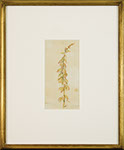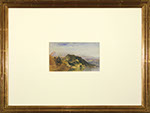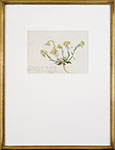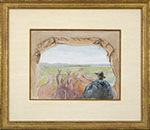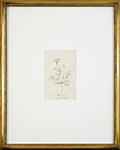
- ESTABLISHED 1976 -
Colyer
Vincent
(1825 - 1888)
Like his fine watercolors of the American landscape, Vincent Colyer’s early life is a delicate whisper of mystery. We are unclear on what exactly his Quaker upbringing was like, however it must have made a significant impact on him, as his later life would be dedicated to the welfare, well-being, and well-treatment of the minority nations in the United States.
Born in 1825 in Bloomingdale, New York, Colyer grew up in conservative, Quaker surroundings. By the time he was 19, Colyer chose to pursue an education in the arts and so moved to New York city. He studied at the National Academy of Design in New York with John R. Smith from 1844 until 1848, resulting in his recognition as one of the finest portrait painters of the time. During the 1850’s, his crayon portraits in particular were a hot commodity, selling for $150 a piece.
In 1860, Colyer put his painting career on hold to become a medical corpsman in the American Civil War. Colyer was involved in a number of humanitarian efforts until the war, representing Friends of the Indians and was named Superintendent of the Poor. He considered himself a voice for the underprivileged classes of the United States.
After the war, Colyer moved to Contentment Island, Connecticut to resume his painting career. He built a studio, calling it Kensett, after his good friend and renowned artist John F. Kensett. Here he worked on landscapes, studying the romantic way in which to capture light through varying seasonal changes.
In 1869, Colyer was appointed secretary of the Board of Indian Commissioners by President Ulysses S. Grant, charged with recommending suitable areas for those considered for reservations. He was chosen because of his reliable concerns for the humane conditions of minority groups.
Colyer had a deep respect and admiration for the native tribes, calling them “the finest riders in the world” who “when seen moving about on their ponies and horses with their bright-colored blankets, are the most picturesque people imaginable”. Colyer felt comfortable communing with the various tribes and was able to capture their beauty through his continual sketching engagements.
Colyer made a tremendous impact on documenting American topographical history. His works are still used today as documentary annotations on what North American looked like during the government’s 19th century expansion. More than two hundred sketches, mostly accomplished in the field between 1868 and 1872 are found today in major institutional collections. The Beinecke Library at Yale University owns fifty of his Alaskan views, a number of them incorporating studies of weather phenomena.
Colyer passed away in 1888 at his Connecticut home. Colyer’s unique ability in portraits, watercolors, drawings, and botanical specimens demonstrate his painterly approach in documenting American geographical history.








